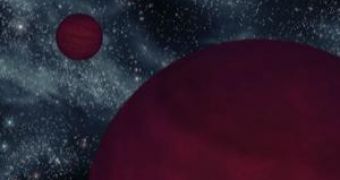The Two Micron All Sky Survey (2MASS) initiative performed by NASA's Infrared Processing and Analysis Center found what was thought to be a single, common brown dwarf planet, which was called 2M 0939, short for 2MASS J09393548-2448279. There was nothing special about it and not much attention was paid to it – not much more than to other similar planets, anyway. But a recent finding by a team of astronomers, led by physicist Adam Burgasser from MIT, changed all that.
The team used observations from NASA's Spitzer Space Telescope and discovered that something was wrong with the planet. Brown dwarfs are failed stars: gaseous bodies that can perform nuclear fusion but are too small to support the process over their lifespan. The planet was found to be too cool (only 292 to 362 °Celsius or 565 to 635 Kelvin or 560 to 680 Fahrenheit) reported to its brightness (which was twice the intensity of the regular brown dwarf planets).
The proposed reason was that the observed object was, in fact, formed of twin planets of approximately the same size, which is similar to that of Jupiter, except that their mass was determined to be about 30 to 40 times larger. This approach turned the pair into the lowest star-like objects ever recorded and the first to breach the barrier of a millionth of the Sun's brightness. Subsequent observation placed them some 17 light years away from the Earth, in the direction of the Antlia constellation, moving at a speed of 100,000 km/h.
“These brown dwarfs are the lowest power stellar light bulbs in the sky that we know of,” shared Burgasser, as cited by New Scientist, adding that this type of objects might be much more common than previously estimated and observed, perhaps even predominant. “In this regime [of faintness] we expect to find the bulk of the brown dwarfs that have formed over the lifetime of the galaxy,” explained the physicist. “So in that sense these objects are the first of these ‘most common’ brown dwarfs, which haven’t been found yet because they are simply really faint.”

 14 DAY TRIAL //
14 DAY TRIAL //